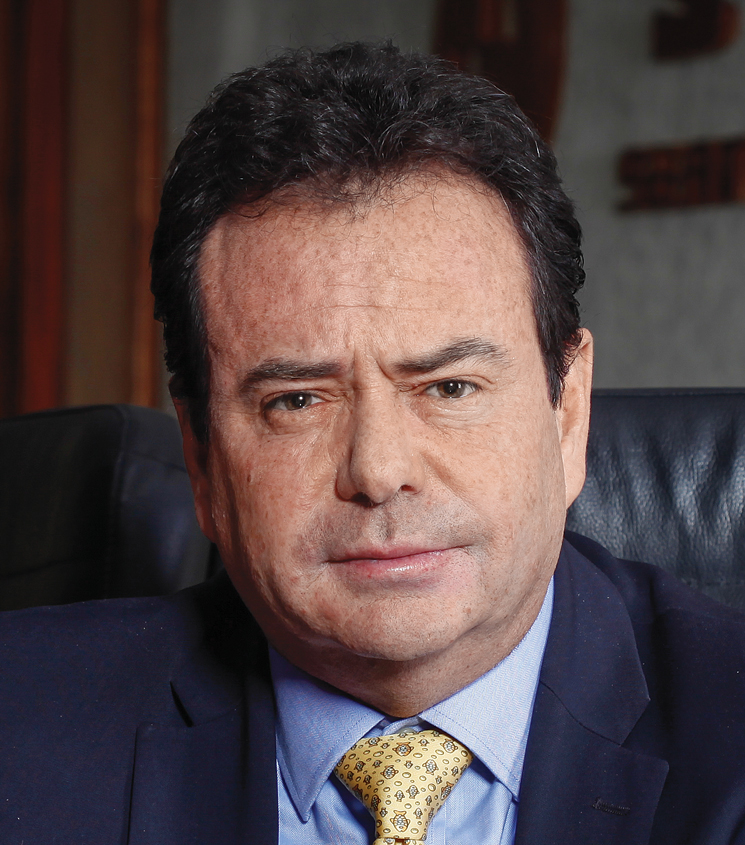Mexican Automotive Market’s Regional Differences

STORY INLINE POST
Mexico is considered a "megadiverse" country since it forms part of the select group of nations possessing the greatest diversity of animals and plants. This diversity is also manifested in the existence of 68 linguistic groups that correspond to the original peoples of our country and that have given our gastronomy, crafts, music, and plastic arts the stamp of a multicolored mosaic in their encounter with cultures and ethnicities from all corners of the Earth.
Nevertheless, diversity also has an unpleasant side in the differences between regions in terms of opportunities and development, which has led many to speak simplistically of “two Mexicos,” with an export-driven North Center and a structural weaknesses and lack of infrastructure in the South Center that hinders economic development. However, there is room in this description for exceptions, such as the link between Cancun and the Riviera Maya and international tourism.
In the automotive market, which is influenced by the dynamics of the regional economy and the social factors present in a particular field, this diversity is also evident. Let us cite what is happening to tourism in Quintana Roo as a result of COVID-19 in support of the first point and give an example of the second that we will illustrate with the introduction of illegal vehicles on the border and in the north of the country.
There were 10 vehicle buyers in Mexico per 1,000 inhabitants at the end of 2019. There are, however, relevant differences in geographical distribution for this indicator: 12 in the Northern Region, nine in the Border Region, 11 in the Central Region and seven in the Southern Region.
The light vehicle market in Mexico decreased by 31.6 percent in the first half of 2020. In the same period, the Border Region lost 33.5 percent, the Northern Region decreased 33 percent, the Central Region fell 30.2 percent and the Southern Region dropped 32.1 percent.
Today, the COVID-19 pandemic has had a widespread impact on economic activity around the world. However, as has happened in other economic crises, the recovery curve is moving at uneven speeds among regions of the country.
An example of this is the behavior of vehicle sales in the period from 2014 to 2016, when the highest vehicle sales records were achieved in the country (19.1 percent national increase in 2015 and 18.7 percent in 2016). In 2016, Veracruz only advanced 7.4 percent, Tabasco dropped 9.2 percent and Campeche lost 4 percent of its sales.
The exposure of these entities to the participation of oil in their economies and the impact of oil disinvestment during that period due to the poor management of PEMEX and the crude price crisis of August 2014 was among the common factors on the slope of the Gulf of Mexico.
The behavior of the automotive market in the state of Baja California in 2019, which saw a 5.3 percent increase in vehicle sales, while the national total fell by 7.5 percent, is another example of regional differences and their connection to economic and political factors.
The Tax Incentives Decree for the Northern Border Region, which includes benefits for consumers with a 50 percent reduction in VAT payments (8 percent rate versus 16 percent national rate), was one of the factors that had much to do with this outcome.
In spite of the risk of losing your attention with so many figures, I consider it important to take into account the contribution of each region to the automotive market (from the average supply due to the relative participation of the distributors, as well as the demand due to their participation in the purchase of light vehicles) according to their contribution to the Gross Domestic Vehicle Market.
Northern Region (Chihuahua, Coahuila, Durango, Nuevo Leon, Sinaloa, Sonora, Tamaulipas): participates with 24.0 percent of national GDP, represents 22.9 percent of the country's light vehicle buyers and concentrates 22.5 percent of the total light vehicle distributors.
The Northern Border and Border Strip Region includes the states of Baja California and Baja California Sur, as well as the border municipalities of Sonora, Coahuila, Chihuahua, Nuevo Leon and Tamaulipas.
The Central Region includes the states of Aguascalientes, Mexico City, Colima, Guanajuato, Hidalgo, Jalisco, Mexico, Michoacan, Nayarit, Queretaro, S.L.P. and Zacatecas, which together account for 49.04 percent of Mexico's GDP, 53.1 percent of the country's vehicle buyers and 48.3 percent of all light-vehicle distributors.
The Southern Region includes Campeche, Chiapas, Guerrero, Morelos, Oaxaca, Puebla, Quintana Roo, Tabasco, Tlaxcala, Veracruz and Yucatan. These regions account for 22.4 percent of the country's GDP, 20.5 percent of vehicle buyers and 25.1 percent of all light-vehicle distributors.
This description is an illustration of what we can find if we take indicators as diverse as access to education, health and per capita income as reference points and place ourselves before the challenge of generating a large national agreement that emphasizes the dilution of inequality between regions due to public and private investment in those less developed places.
However, I emphasize the use of the concept of investment, through which a positive return is expected in the future (economic and social), and not simply the increase in public spending through government programs that, at most, contribute to the subsistence of the beneficiaries or the construction of public works with negative returns, such as those being promoted in the South-Southeast (the Dos Bocas refinery and the Maya Train).
Let's not give up on building a better country.








 By Guillermo Prieto Treviño | Independent Contributor -
Tue, 10/20/2020 - 13:39
By Guillermo Prieto Treviño | Independent Contributor -
Tue, 10/20/2020 - 13:39
















